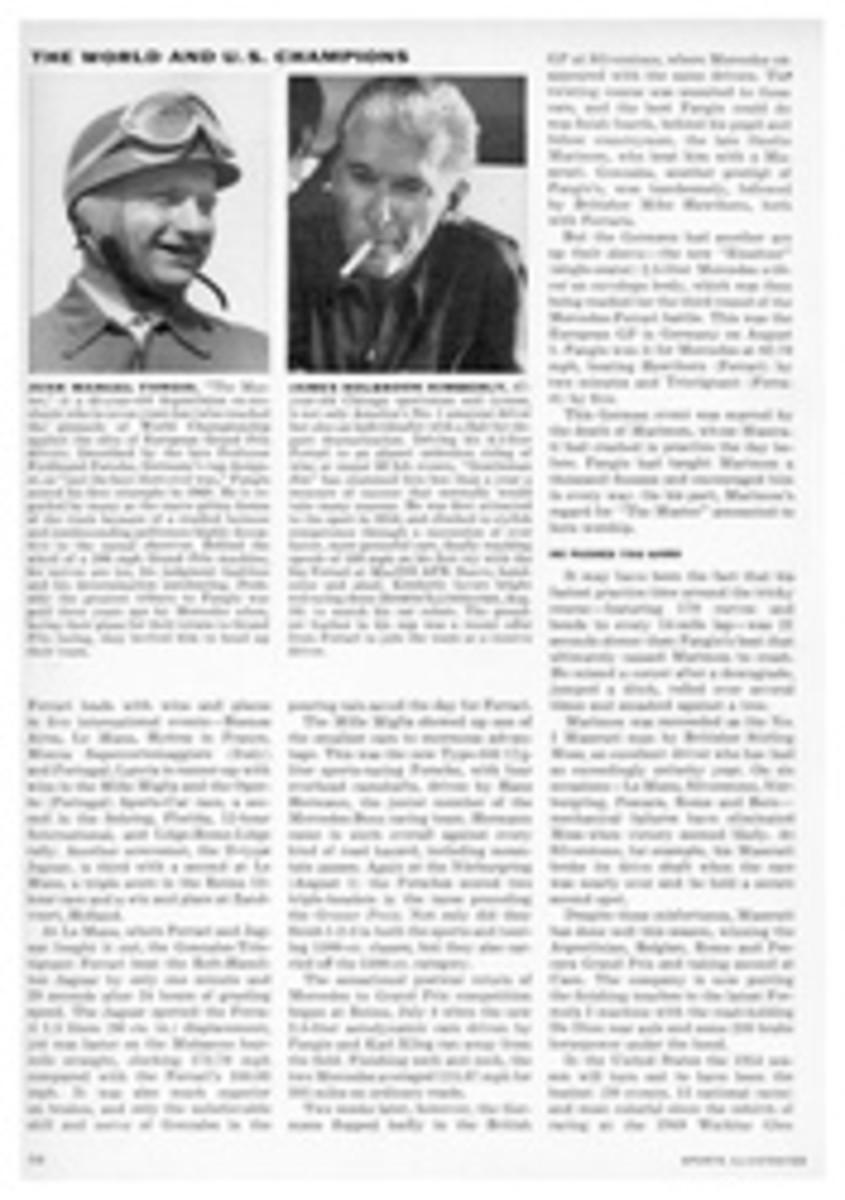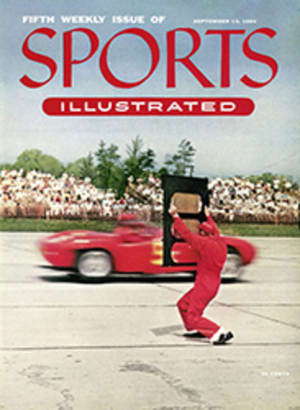
YOU CAN'T KEEP YOUR EYE ON THE BALL
A Hundred years or so ago an early baseball coach waggled an admonishing finger at a chin-whiskered rookie and said, "The first rule in hitting a baseball is: 'Keep your eye on the ball from the time it leaves the pitcher's hand until the moment it hits your bat.' " This precept soon attained the status of the gospel and it has been drilled into would-be baseball players ever since. It's a fine idea, but it can't be done, no matter how physically fit the batter is.
The truth is that baseball hitters never do see the ball when they swing at it. They lose sight of it anywhere from eight to 15 feet away from home plate. Proof that the batter cannot follow a pitch all the way home comes from two physical-education researchers at the University of Illinois, Dr. Alfred W. Hubbard and Charles N. Seng, who took motion pictures of 29 major-league hitters in action.
NOT BLIND, JUST CAN'T SEE
The pictures (above) revealed in every case that the batter's eyes were not on the ball when it was hit. This was true whether the pitch was a fast ball traveling about 90 mph or a relatively slow ball at 55 mph.
When a batter swings he tracks the ball with his eyes alone; his head remains stationary unless he elects not to swing at all. The basic technique in tracking a baseball is called "pursuit movement," or keeping the eyes fixed on the movement through a constantly changing focus. The onrushing ball is seen as a blur.
To keep the ball in view after the pitcher first lets it go, the batter's eyes must cover a visual field of only about 15°. Pursuit movement is fast enough to accomplish this. But when the ball reaches a point about 20 feet from home plate the batter must be able to see over a much greater angle. The ball's relative speed to the batter has increased to the point where even the slow ball travels too fast for the eyes to keep up with it over this wider field. Only by turning his head could the batter keep his eyes on the ball, and a batter can do this only if he figures as Mighty Casey did, "Tain't my style," and gives it the go-by.
Baseball is an incredibly fast game. A ball takes from two-fifths to three-quarters of a second to travel the 60 feet between the pitcher and the catcher. Within the first 40 feet of the ball's journey, the batter calculates its speed, its height, and its probable direction (curving or not). He relays an educated guess to his body and by the time he loses sight of the ball his swing has already begun.
If he holds up on the swing it is because the calculation already tabulated indicates that the ball will miss the strike zone or is not the type of pitch he wants. If he goes through with the swing, any further information on the path of the ball which his eyes might give him would be useless anyway. It is too late to translate this information into a corrected swing; the body has taken over from the eyes. Results now depend on how well educated the guess was and how well the estimate was incorporated into the swing.
HIGH AND INSIDE? MAYBE
Even Boston Red Sox slugger Ted Williams, who is reputed to have the "fastest" eyes in baseball, now admits that he can't follow the ball all the way home. Williams says, "No, I don't see the ball when it hits the bat. You usually lose sight of it a few feet away. Once or twice in my whole career I'd say I saw the ball hit the bat, but that's all." (Dr. Hubbard says this might be possible on a high inside pitch which is hit well out in front of the batter because the angle of vision necessary in such circumstances is greatly reduced.) Of course, in the case of Mr. Williams (not to mention Willie Mays) it doesn't seem to matter much.
FOUR PHOTOS
With the aid of high-speed movies scientists have disproved baseball's oldest maxim. In this sequence Chicago's Outfielder Hank Sauer still sees ball (left, arrow) as he starts his swing. In the next instant he loses sight of it (second picture) and, as the camera shows, does not glimpse it again until after blow is struck (right)

